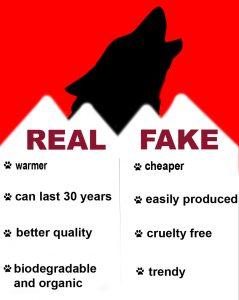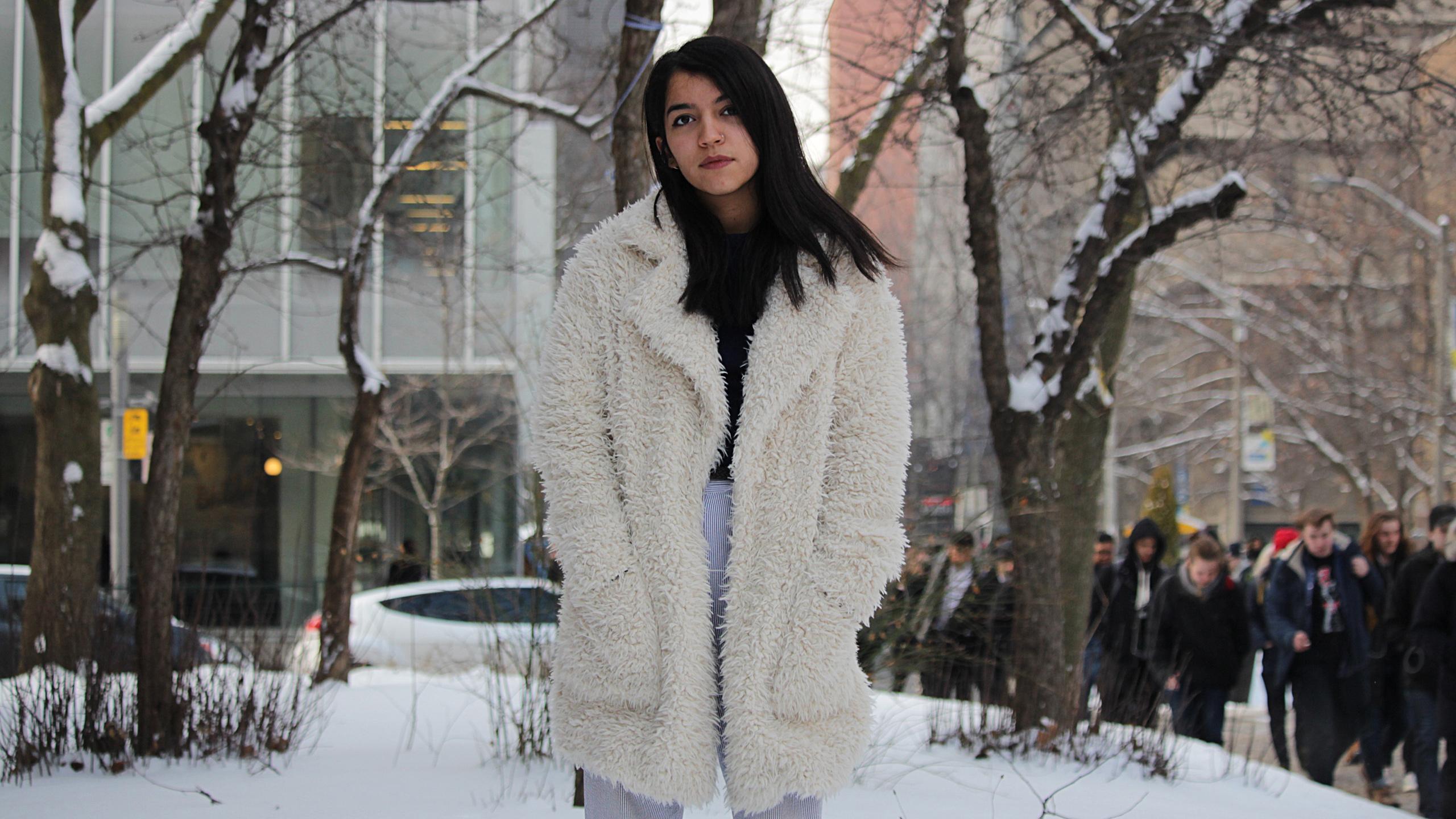By Madison Henry
As temperatures drop in Toronto and people are looking for coats to wear, the debate between real and faux fur heats up. Popular brands such as Nobis and Canada Goose use real fur, while others boast using faux fur. Some see nothing wrong with using real fur as long as it has been ethically sourced. But faux fur also has its own environmental impacts.
Kirsten Schaefer is a PhD candidate and a contract lecturer at the Ryerson School of Fashion. She said the debate between faux fur and real fur is both “complex and very simple.”
Stories of animals locked in cramped cages and mistreated in fur farms are common knowledge.
Ethical fur sourcing is less hurtful towards animals. Animals are killed by trappers who have licenses and know how to trap animals without inhumane treatment. According to the International Fur Federation “hunting and trapping wild fur is a well-used method of wildlife management and has little impact on the environment.” The idea is to hunt without having a lasting impact on the wildlife population.
But Schaefer said this doesn’t necessarily give the “green light” for faux fur.
While faux fur does not involve directly harming animals, it is terrible for the environment. Faux fur is made from non-renewable petroleum-based products such as nylon, acrylic and polyester. These chemicals are not broken down easily. Researchers at the University of California at Santa Barbara found that, on average, synthetic fleece jackets release 1.7 grams of microfibers each wash and will lose their fibers more quickly than real fur items.
Schaefer said typically, faux furs will wear down more quickly than real furs, resulting in a cycle of “fast fashion.”
“[Consumers] might just discard or donate a worn-down fur garment to purchase a new one-but keep in mind that this just uses more resources and creates more pollution than buying a real fur garment and taking proper care of it,” she said.

Graphic by Sarah Krichel
This debate plays a role in Ryerson’s School of Fashion.
The fashion program has a fur design course that introduces students to the use of fur in apparel design. The course is offered on a rotational basis.
Robert Ott, chair of the Ryerson School of Fashion, said the program will accommodate those who have ethical concerns toward materials like fur used in the program.
“We focus on educating our students on the environmental, ethical and sustainable implications of materials to allow them to make informed decisions,” he said.
One of the projects displayed on the school’s website was of students making an accessory using fur that was donated by the North American Fur Auction (NAFA).
On their website, NAFA says they are concerned about the safety and well-being of the animals that they obtain fur from and they ethically trap and kill animals for fur.
But Schaefer said there’s an uncertainty in ethically made furs since the way products are made is not always clear.
“The bottom line is that sustainability is an ongoing negotiation. We are not in a position yet where all the products on the market are 100 per cent transparent when it comes to their product development cycle, so there are always things we cannot know,” she said.
Jade Hoang, a first-year urban planning student, said this uncertainty has led to a level of “ignorance” surrounding fur in clothing.
“Unfortunately the biggest and most popular brands for winter coats use fur and down. I think that I’ve been shaped into being ignorant, and dismissing animal cruelty that goes into making these jackets.”
Schaefer said since both choices contain significant impacts, it could be argued that it’s best to avoid these materials altogether.
“I think it’s rare that someone would be anti-fur but OK with excess environmental waste, so the two topics are closely interconnected. The best decision if you are against wearing fur, from an ethical and environmental perspective, is to avoid both options, faux and real.”
There is no correct answer in the debate of faux fur versus ethically sourced real fur. When it comes to fur, consumers should always do their research on where the fur came from and the impact that what they are buying has on the environment and the animal.











Carly Taylor
Wild trapping is hardly ethical. Canada Goose, for example, uses leg hold traps banned in 100+ countries. They snap down on a coyote’s leg, usually painfully crushing her bone, and she’s often trapped there for days before the hunter comes to kill her. Most coyotes trapped are mothers out searching for food for their babies, who will starve to death when she is murdered. She often tries to chew her own leg off trying to escape. There is NO humane way to take the life of someone who doesn’t want to die – for foods and products we have no necessity for. There are environmentally sustainable alternatives to faux fur. Real fur (literally an innocent being’s skin) should not even be part of the discussion.
Paul Jensen
Well done! Taken right from the pages of PETA indoctrination 101. They must be so proud! Now here is the truth: modern traps (the only legal traps deployed by trappers) are designed to clamp down on the coyote’s foot, across the pad, to make it fall asleep very quickly. The longest legal check time for trappers is 72 hours. Most trappers check their own traps more often so animals are not left to suffer. Trappers are trying to get the most money for their hard work, so they only trap coyotes when they are prime, which is usually between the months of of October through January, maybe early February. NO wild female canine has puppies at this time of the year. In the months where wild canines are having puppies, their fur is not prime and would be worthless, therefore they are not trapped during this time. PETA has fabricated the lie that “most coyotes trapped are mothers out searching for food for their babies, who will starve to death when she is murdered.” PETA cannot win their arguments with the truth, so they resort to these type of misinformation tactics. Now you have the truth.
Arnaud B
Interesting article but some incorrect facts regarding faux fur.
Real fur is not warmer than synthetic. A study conducted by the french laboratory EMITECH revealed faux fur is as warm as mink fur. Synthetic fabrics are the fruit of technological work and innovations. They are used by people working or acting in extreme wether conditions. Not real fur.
A real fur can last 30 years but requires the use of energy wasting facility Storage. It also requires several chemicals component like formaldehyde to resist because otherwise it is a very fragile fiber. Some real furs are even dyed with chemicals.
Faux fur is a robust fabric and can last decades too.
The fact that a real fur coat requires many chemicals makes it not very natural.
Also the concept of biodegradability do not really apply for a fur coat just because a fur coat will never end its life in nature.
Biodegradability most of all applies for very small items that people will tend to throw in nature like cigarette butts or plastic bottles. It is an artificial argument close to greenwashing.
I am a faux fur expert do not hesitate to contact me for more info 🙂
C S
Nature is by definition the most cruel thing on earth. The metrics by which people are trying to judge this are fundamentally flawed.